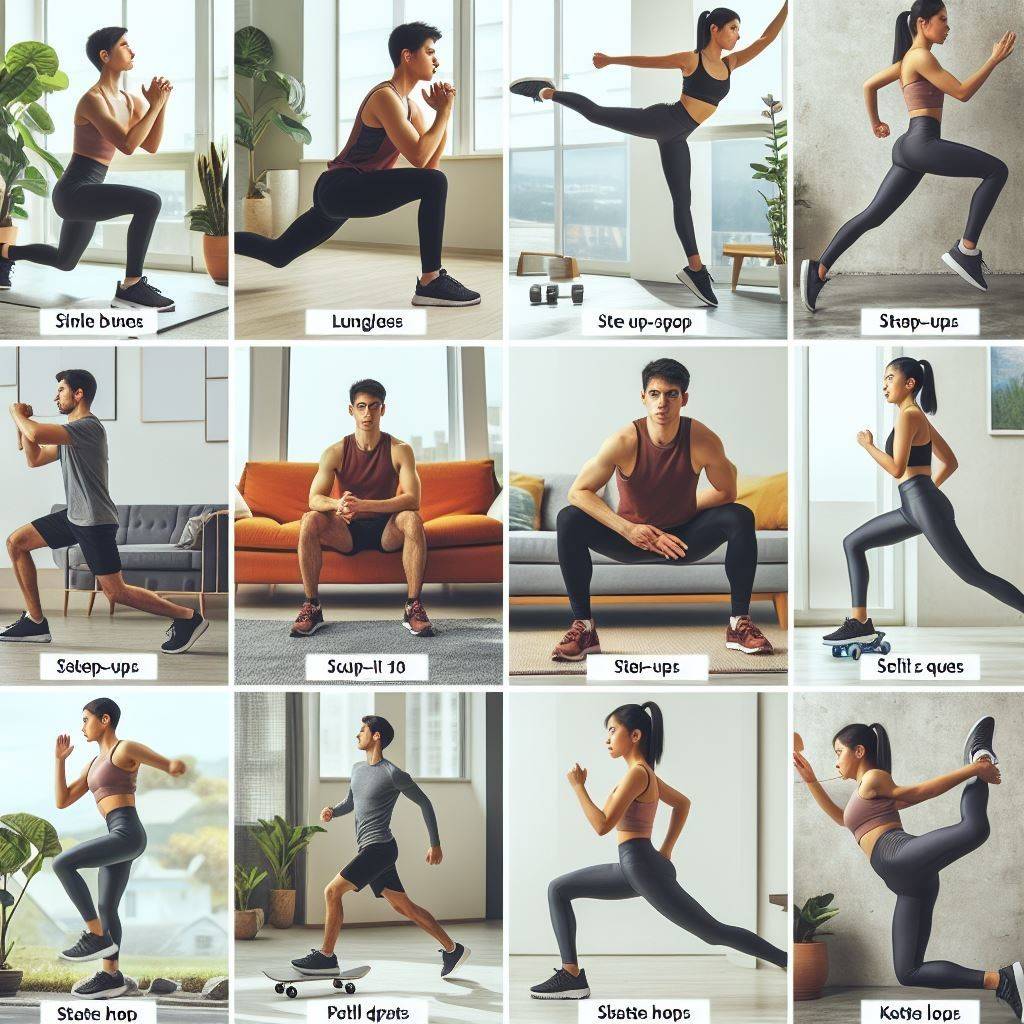Best 12 Single Leg Exercises: Unleashing Strength and Stability
Single Leg Exercises are the most effective exercises for building lower body strength, balance, and stability. Whether you’re an athlete looking to improve performance or someone regaining function after an injury, exercises involving only one leg should be a staple in your training program. In this article, we will discuss the benefits of exercises focusing on one leg and break down 12 of the best single leg exercises to incorporate into your workouts.
Benefits of Single Leg Exercises
Here are some of the top benefits of exercises that focus on one leg.:
- Single Leg Exercises build tremendous strength in each leg individually. This corrects muscle imbalances, develops stability, and prepares the legs for real-life activities.
- They improve balance and proprioception by forcing you to stabilize your body on one leg. This is key to injury prevention.
- It activates muscle fibres that don’t get worked as much in two-legged exercises. This leads to more significant strength gains.
- They burn more calories because more muscles must work to stabilize the body.
- It helps prevent injuries by identifying and eliminating weak links or asymmetries between legs.
- They enhance sports performance for running, jumping, cutting, and kicking.
Now that you understand the importance of Single Leg Exercises, let’s get into the top 12 single leg exercises to build strength from the ground up.
12 Best Single Leg Exercises
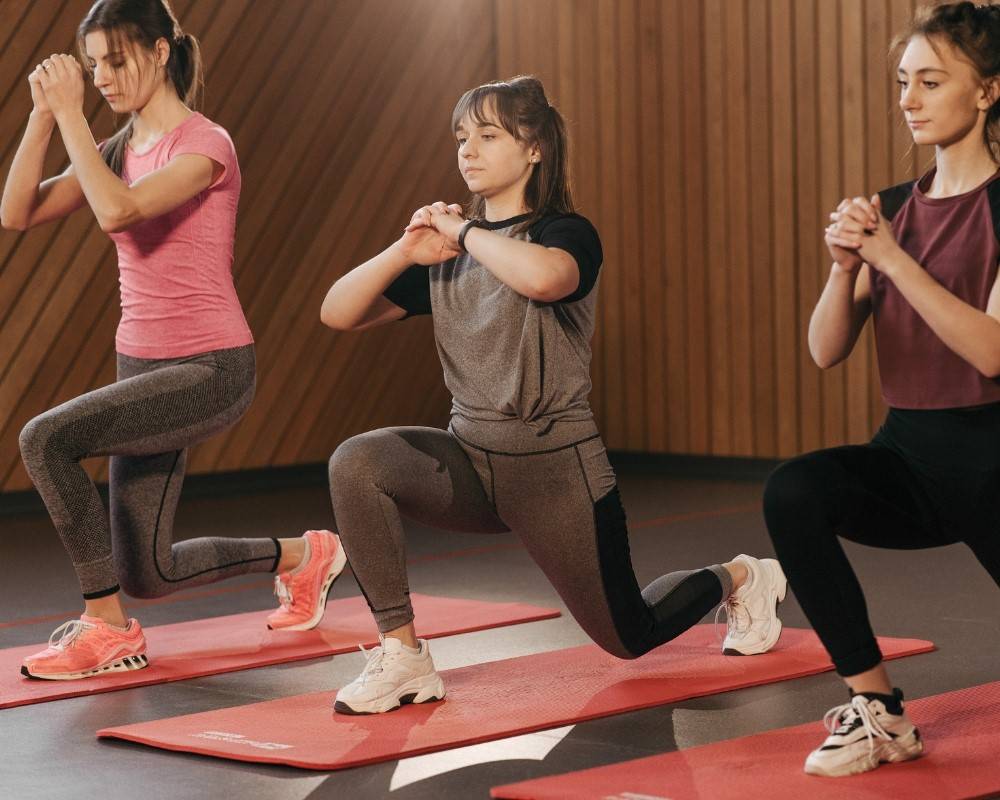
-
Single Leg Deadlift
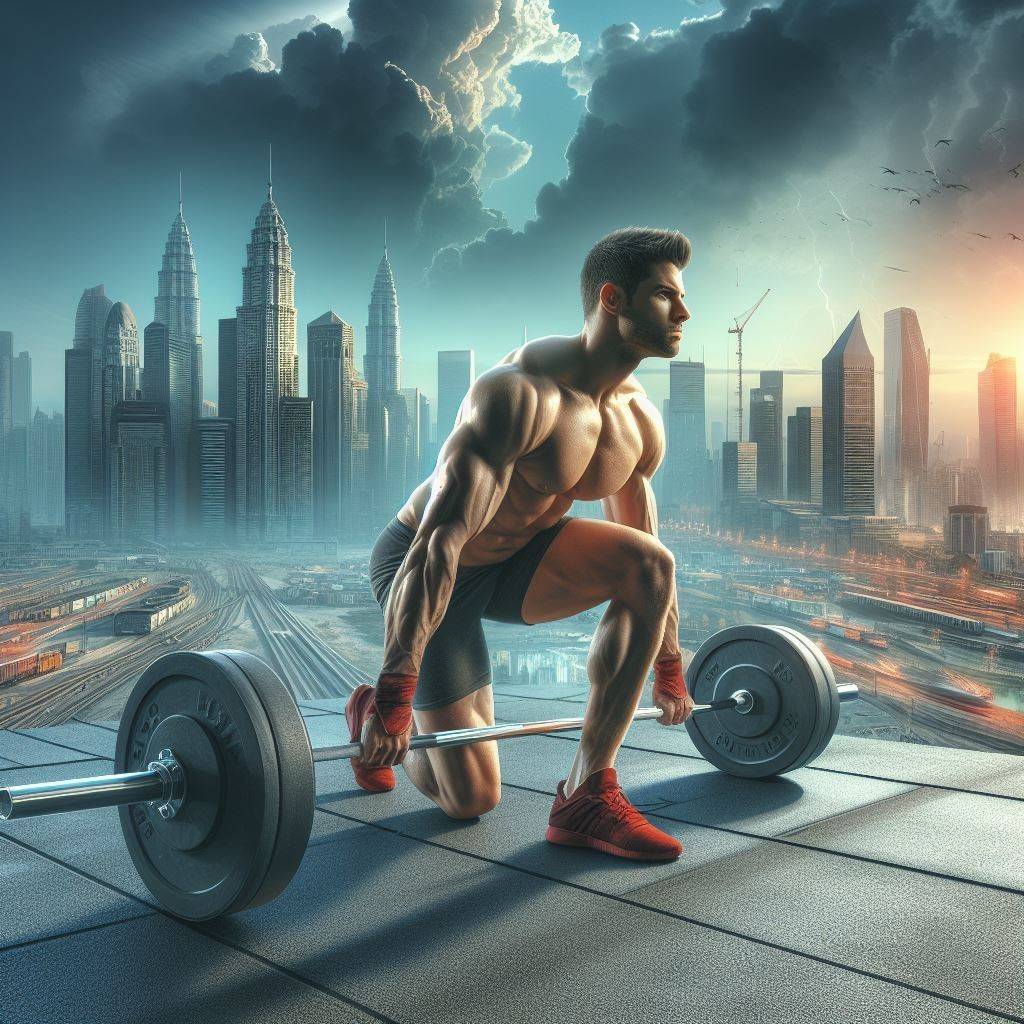
The single-leg deadlift works the hamstrings, glutes, and lower back muscles. It requires balance, mobility, and core strength.
How to do it:
- Stand on one leg with a slight bend in the knee. Hinge at the hip while keeping a flat back.
- Extend the opposite leg behind you and reach your arms straight out in front of you.
- Go down as far as mobility allows while keeping a neutral spine. Use a light dumbbell or kettlebell for added challenge.
- Squeeze the glutes to return to standing. Complete all reps on one side before switching.
-
Split Squat
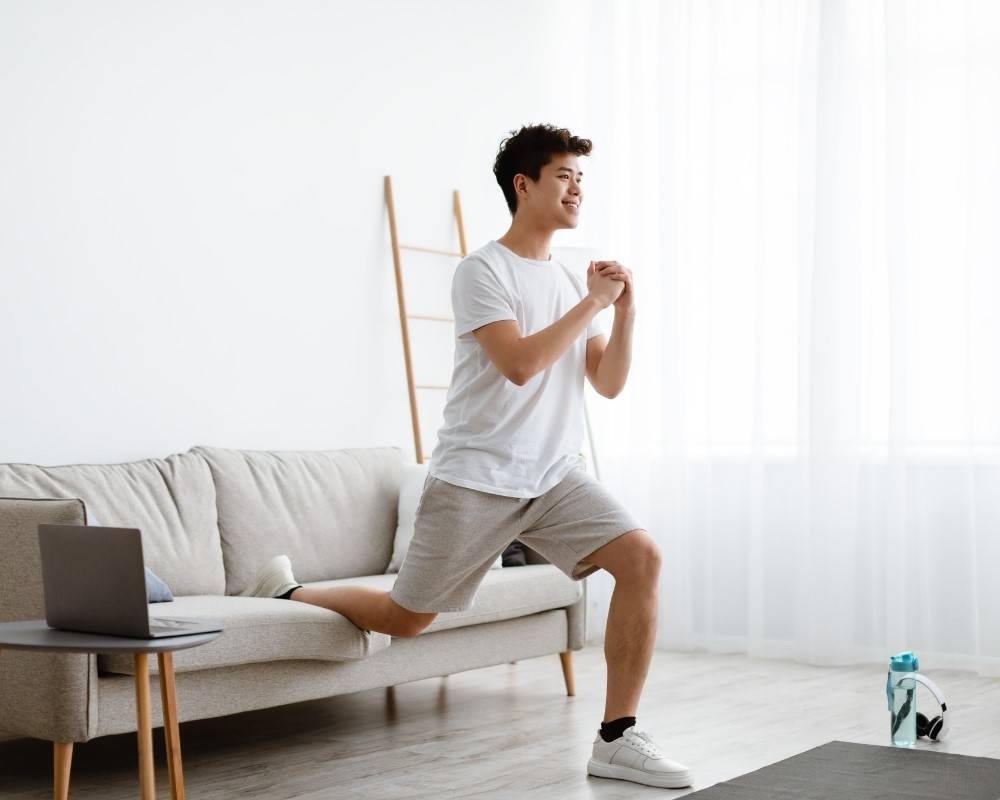
The split squat is a Single Leg Exercises that builds tremendous strength and leg stability. It works the quads, glutes, hamstrings, and calves.
How to do it:
- Stand in a staggered stance with one foot forward and one foot back. Descend until your back knee nearly touches the floor.
- Keep your torso upright and your front knee aligned over your ankle. Push through the front heel to return to the start.
- Complete all reps on one side before switching. Use dumbbells to increase resistance.
-
Step Up

Step-ups engage the glutes and quads while challenging balance and coordination. Use a bench or box that is about knee height.
How to do it:
- Place one foot firmly on the platform and lift your body by extending the hip and knee.
- Step back down under control. Complete all reps on one leg before switching.
- For added difficulty, use dumbbells or drive the knee of the stepping leg up as high as possible.
-
Single Leg Hip Bridge

The single-leg hip bridge isolates the glutes and hamstrings while forcing you to stabilize on one leg. It improves posterior chain strength.
How to do it:
- Lie on your back with one foot planted and one knee bent. Push through the heel to lift your hips.
- Squeeze the glutes at the top, keeping your body straight. Slowly lower back down with control.
- Perform all reps on one side first before switching legs. You can hold a dumbbell or kettlebell across your hips for added resistance.
-
Bulgarian Split Squat
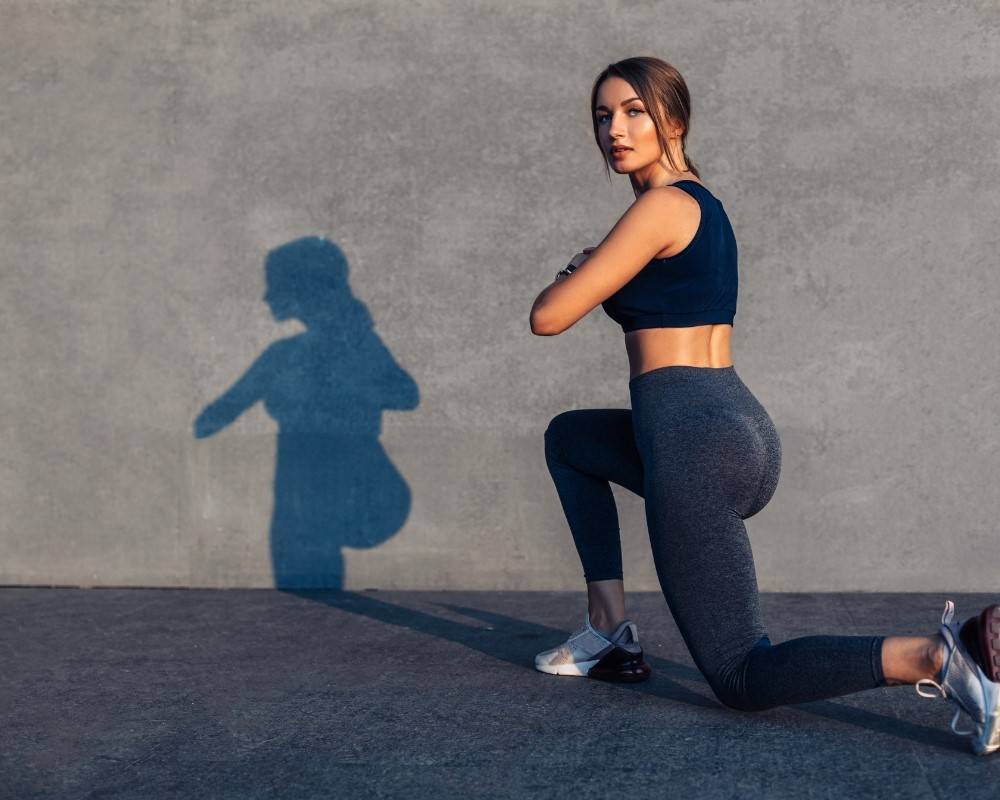
This demanding Single Leg Exercise works the quads, glutes, and calves through a more excellent range of motion than a regular lunge.
How to do it:
- Elevate your back foot on a bench. Descend until your front thigh is parallel to the floor.
- Maintain an upright torso and keep your front knee above your ankle. Drive through the front heel to return to the start.
- Complete all reps on one side before switching legs. Hold dumbbells for an extra challenge.
-
Reverse Lunge
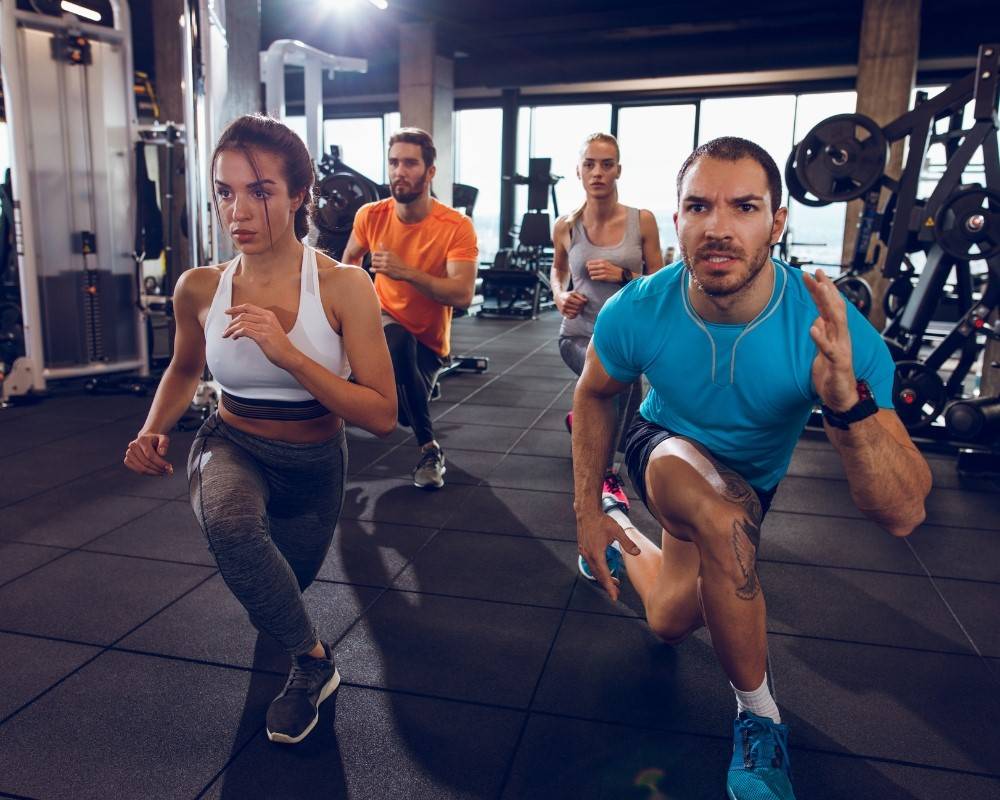
The reverse lunge emphasizes the glutes and hamstrings since you step back instead of forward. It builds leg strength with less pressure on the knees.
How to do it:
- From standing, take an exaggerated step back with one foot, lowering until both knees are bent to 90 degrees.
- Push off the back foot to drive back up to start. Keep your torso upright.
- Complete all reps on one leg before switching. Add dumbbells for more resistance.
-
Lateral Lunge
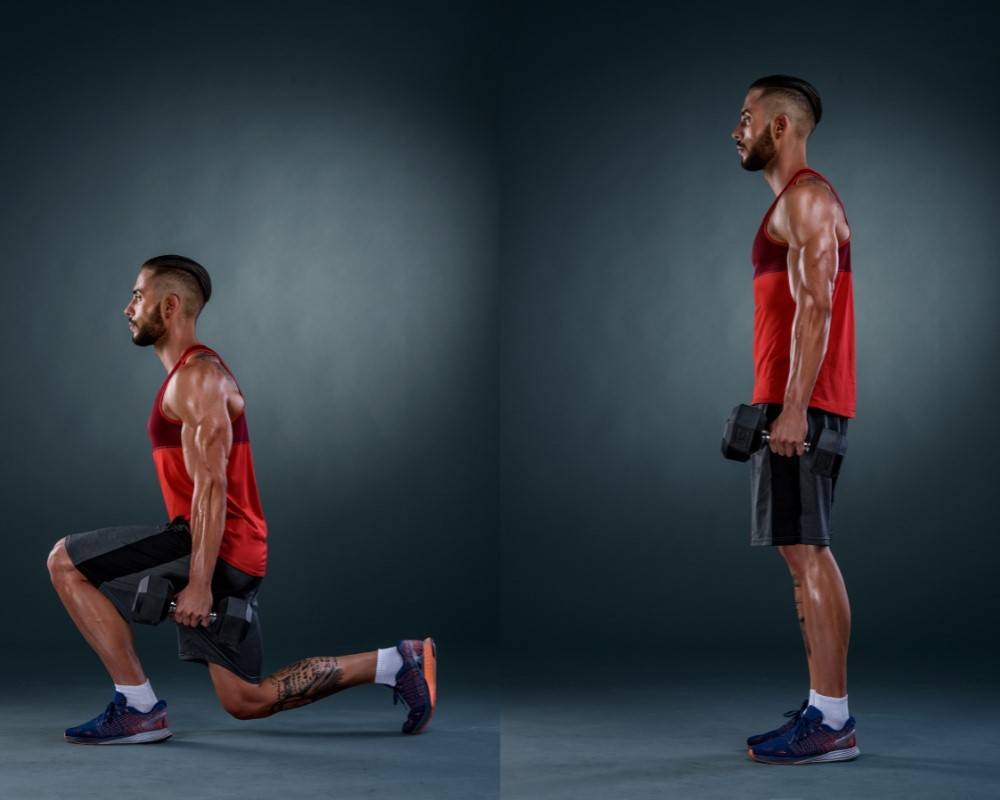
Lateral lunges work the inner and outer thighs as you take a sidestep instead of stepping forward or backward. This improves adductor and abductor strength.
How to do it:
- From standing, take a big step out the side and bend at the knee while keeping the other leg straight.
- Push off the lateral foot to return to the center. Make sure your knee tracks over your toes.
- Repeat all reps on one side before switching. Grab dumbbells to make it more challenging.
-
Skater Hops

This explosive plyometric exercise builds power, balance, and leg coordination. It mimics the side-to-side movement required in many sports.
How to do it:
- From standing, hop to one side on one foot, swinging the opposite leg behind you.
- Land softly with a slight bend in the knee to absorb the impact. Maintain good posture.
- Immediately bound back to the starting position by explosively switching feet. Repeat all reps to one side first.
-
Pistol Squat

The pistol squat is an advanced Single Leg exercise requiring flexibility, balance, strength, and coordination. It trains the legs through a deep range of motion.
How to do it:
- Lift one leg straight out in front of you. Push your hips back and descend into a deep squat on one leg.
- Maintain a neutral spine and keep your standing knee above your toes. Use your arms out for counterbalance.
- Drive through the heel to stand back up. Perform all reps on one side first before switching.
-
Single Leg Calf Raise
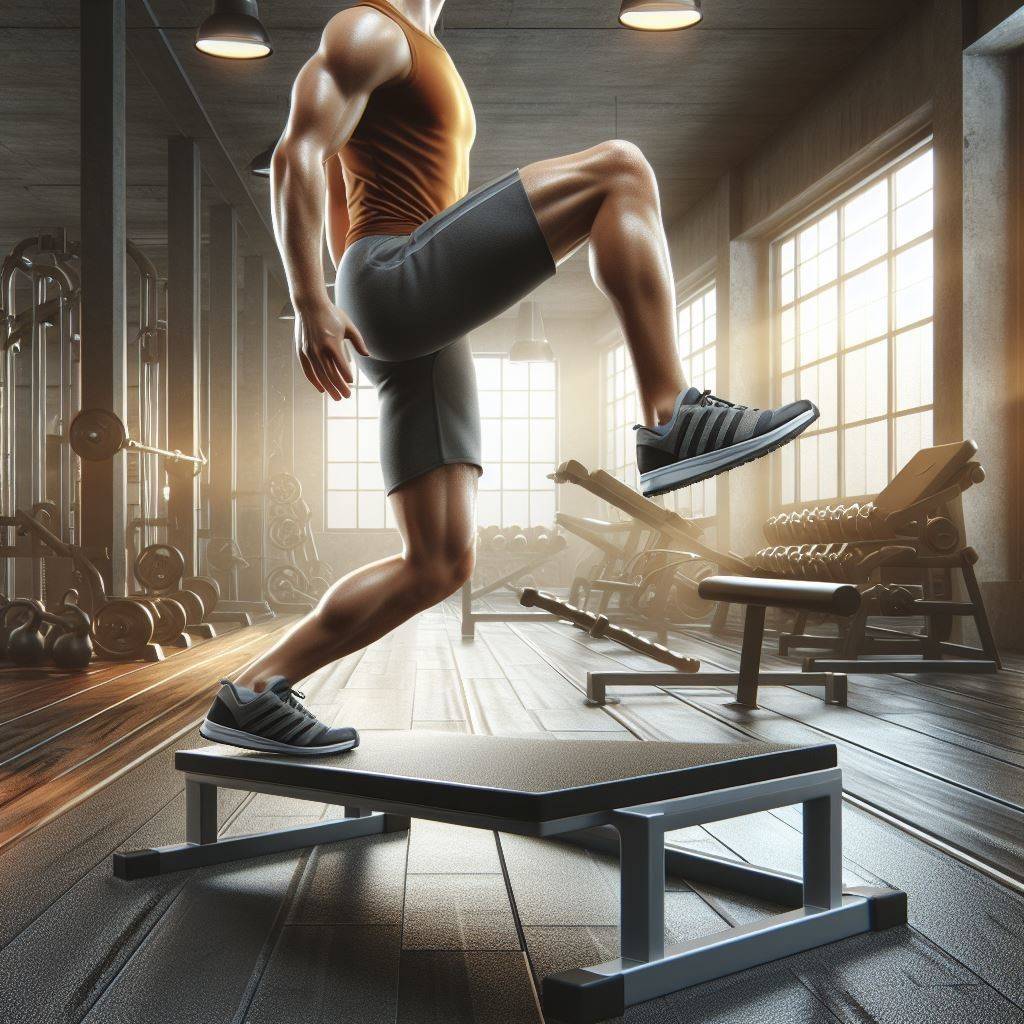
This isolation exercise explicitly targets the gastrocnemius and soleus muscles of the calves. Developing muscular calves enhances athletic performance.
How to do it:
- Stand on a step with heels hanging off and lift the ball off your foot.
- Raise your heel as high as possible, squeezing at the top. Control the descent back down.
- Complete reps on one side first before switching. You can hold dumbbells for extra resistance.
-
Curtsy Lunge
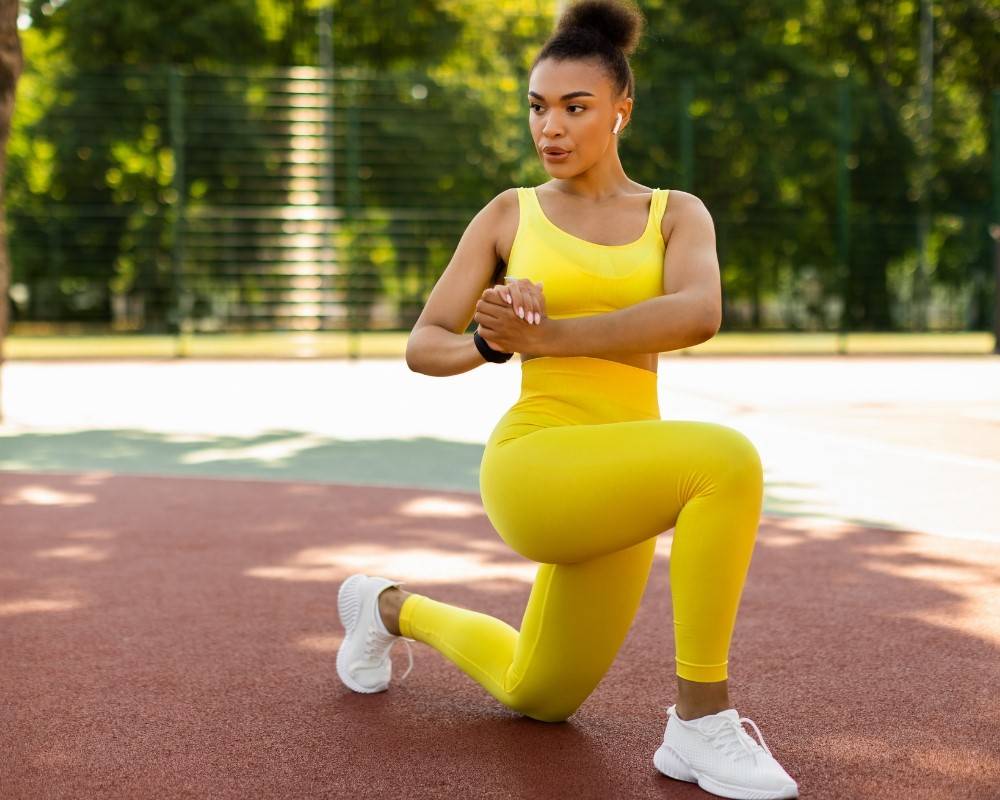
The curtsy lunge adds a diagonal and rotational element to get the glutes and outer thighs working in multiple planes of motion.
How to do it:
- Take an exaggerated step backward and across your body so one leg is behind the other in a curtsy position.
- Descend into a lunge, bending both knees. Drive back up through the heel to return to start.
- Complete all reps on one side first before switching. Use dumbbells to increase the challenge.
-
Single Leg Bench Get-Up

This functional exercise improves strength, stability, and coordination through a series of movements done on one leg.
How to do it:
- Start seated on the floor in front of a bench. Roll down onto your back while lifting one leg.
- Press onto the bench to sit up, then stand up (keeping the other leg raised). Reverse the pattern to return to the start.
- Complete the sequence on one side first before switching legs.
Programming Single Leg Exercises

Now that you know some of the best Single Leg Exercises, here are some tips for programming them into your workouts:
- Pick 2-4 single leg exercises per workout. Work through the movements one leg at a time before switching.
- Place single-leg moves first in your workout when your muscles are fresh.
- Start with more straightforward exercises and progress to more advanced/explosive movements as you build strength.
- Allow full recovery between sets. Single-leg training is taxing.
- Focus on low-to-moderate reps (6-12) with excellent form. Prioritize quality over quantity.
- Increase intensity by holding dumbbells, adding explosiveness, or slowing tempos.
- Reduce load if form falters. It’s normal for one side to be weaker initially.
- Build up gradual density and volume over time as single-leg strength improves.
- Also, train double leg exercises like squats, lunges, and deadlifts to complement single leg work.
FAQ Frequently Asked Questions
Are single-leg exercises better?
Yes, single-leg exercises are efficient! They build lower body strength than two-legged moves. Stabilizing your body on one leg works your glutes, hips, core, and smaller stabilizer muscles more. Single-leg training helps correct imbalances, improve athletic performance, and prevent injuries.
What is the single best exercise to strengthen your legs?
While there are many excellent leg exercises, the split squat tops the list. Split squats target your quads, hamstrings, and glutes through a deep range of motion while forcing your stabilizer muscles to work hard. They build tremendous lower body strength in both legs independently.
What is a single-leg movement?
A single-leg movement is any exercise performed standing on just one leg. Examples include split squats, step-ups, pistol squats, single-leg deadlifts, and hip thrusts. These moves isolate each leg, revealing imbalances and making your legs work harder to stabilize your body.
What is a single leg exercise for knees?
Some of the best single leg exercises to strengthen the knees and leg muscles around them are:
- Split squats – Strengthen quads and reduce knee strain compared to regular squats.
- Step ups – Control your knee position and build stability through the joint.
- Reverse lunges – Emphasize the glutes and hamstrings with less pressure on the knees.
- Lateral lunges – Strengthen medial/lateral knee stabilizers through a side-to-side motion.
Takeaway
Single Leg Exercises build impressive lower body strength and stability that transfers to sports, daily life, and injury resilience. Some of the top single leg exercises include split squats, step-ups, and reverse lung.
Conclusion
Single Leg Exercises are one of the best ways to build functional lower body strength while correcting imbalances between sides. Split squats, lunges, step-ups, and single-leg deadlifts force you to stabilize and strengthen each leg individually. This enhances sports performance, knee, and ankle stability, balance, and coordination.
Start incorporating more single-leg work into your training routine 2-3 times weekly. Focus on proper form and progress the difficulty slowly over time. Be patient and allow your body to adapt to these challenging unilateral movements. With consistent practice, you will unlock additional levels of leg strength, mobility, and resilience through targeted exercises focusing on one leg.

